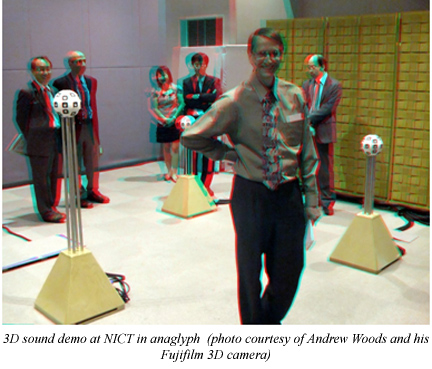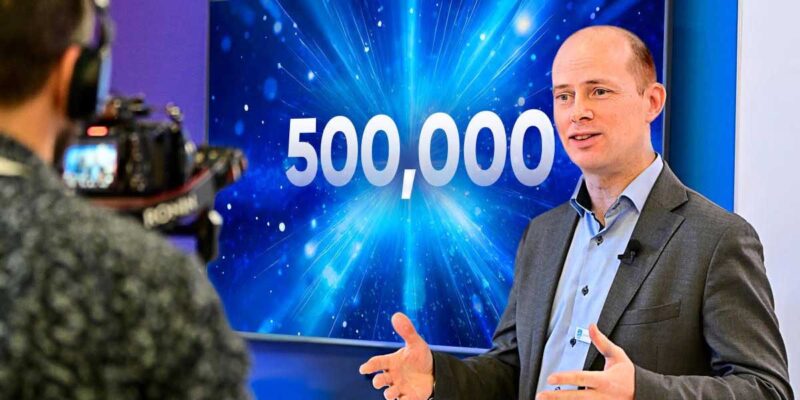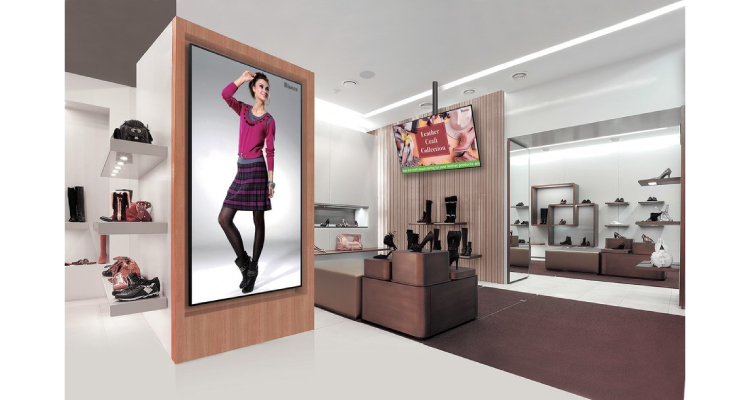Displays in 2022
I am in Japan this week to attend the 3DSA conference, which is sponsored by NICT (National Institute of Information and Communications Technology). Part of the research conducted by NICT, and the focus of 3DSA, is on futuristic display technology. This week we also picked up word that the Japan Football Association (JFA) is promoting some very advanced display technology as part of its bid to win the 2022 World Cup event. Therefore, talking about the future of displays in 2022 seemed like a good idea for today’s Display Daily.
The FIFA World Cup event is huge and this year marks a major ignition point for 3DTV with coverage of the event. This coverage will be in stereoscopic 3D for viewing on glasses-based 2-view TVs.
In 12 years, the experience could be quite different. According to JFA general secretary Kohzo Tashima, chief executive officer of the bid committee, they have included a 550 billion yen (six billion dollar) “Universal Fan Fest” project as part of their bid package. This project will “treat football fans worldwide to ultra-realistic live 3-D telecasts of World Cup matches.”
What  does this mean? According to Tashima, during each match, images would be captured from 360 degrees by 200 high-definition cameras and transmitted as three-dimensional images. The matches would be shown on giant screens or, if technological advances in coming years allow, projected like a real match onto the pitch itself, giving viewers the illusion of watching the real thing. We were not quite sure what he meant by “the pitch itself,” so we asked NICT VP Dr. Kazumasa Enami about this concept. It turns out we asked exactly the right guy as it was his proposal to JFA that got them excited about the possibilities and inclusion in the bid.
does this mean? According to Tashima, during each match, images would be captured from 360 degrees by 200 high-definition cameras and transmitted as three-dimensional images. The matches would be shown on giant screens or, if technological advances in coming years allow, projected like a real match onto the pitch itself, giving viewers the illusion of watching the real thing. We were not quite sure what he meant by “the pitch itself,” so we asked NICT VP Dr. Kazumasa Enami about this concept. It turns out we asked exactly the right guy as it was his proposal to JFA that got them excited about the possibilities and inclusion in the bid.
According to Enami, the idea is to create a display system as large as an Olympic-size swimming pool. Projectors would be arrayed underneath a giant-size screen and the audience would sit in bleachers around this display – just like in the actual sporting venue. Using a super multi-view technique, the audience would be able to see the event from their perspective in the seats. Change your seat and you would get a different view of the action — just like in real life. And — this would all be without any eyewear.
Is this possible? According to Enami, yes. In effect, they are already doing the development work needed to create such a display. For example, a 70″ super multi-view light field type display using over 50 projectors has already been developed in their Kyoto labs. A 200″ version is planned for 2013. Can a 100-meter version be ready by 2022?
Yesterday, I was able to tour the NICT facility and see demonstrations of other futuristic display technology. For those readers of Large Display Report, you may already be familiar with some of the advanced technologies developed by NICT, most of which was shown at NAB 2009.
For example, one technology features a device to interact with a 3D virtual object using a tool that includes force feedback and sounds (drag the tool over the object and you hear a scratching sound). New to this technology is the addition of smell, although we were not able to experience that advancement.
NICT is also quite involved with integral imaging and electronic holography. A demo to highlight this capability showed capture of a rotating object using a white light source, a 240×135 lens array and a JVC camera with 3840×2160-pixel resolution. Elemental images from each lens array component are electronically processed into a hologram. These are combined over the entire image to produce red, green and blue holograms that are sent to the display section at 30 frames per second. The display system features red, green and blue lasers illuminating very high-resolution LCoS panels (also from JVC) to transform the holographic data, which is written to the panel, into a visible image. This image changes in real time, but it has a tiny 4-degree field of view, is only about an inch square in size and contains speckle from the laser sources. This was also shown at NAB last year.
What I missed last year was the 3D sound demonstration, which I found to be the highlight of the tour. For this, NICT hired three musicians: two guitar players and one shakuhati (bamboo flute) player. In the recording studio, 26 microphones arranged in a spherical pattern, surrounded each musician. For playback, NICT created a spherical speaker enclosure with 26 1-inch speakers arranged in the same relative positions as the microphones. These speakers were positioned in a room at the locations and heights of the original instruments during recording (check out the anaglyph 3D photo of the room). When played back, the sound quality was simply amazing. You could walk around these “virtual musicians” hearing the sound from various angles. Stand in front of the shakuhati player and it was definitely louder. Walk around and you can hear different mixes of the sound. The quality was so good it was nearly lifelike. Very cool.
 NICT has other display technologies they are developing and there will be two days of papers from various groups that will provide insight into the direction of research in future displays. Today, I talked about our 3DTV forecast methodology, which attendees told me was far more complex and involved than they had imagined. Tomorrow, I want to listen to what they think about the future.
NICT has other display technologies they are developing and there will be two days of papers from various groups that will provide insight into the direction of research in future displays. Today, I talked about our 3DTV forecast methodology, which attendees told me was far more complex and involved than they had imagined. Tomorrow, I want to listen to what they think about the future.
Chris Chinnock is a senior analyst and editor at Insight Media. Reach him at chris@insightmedia.info





